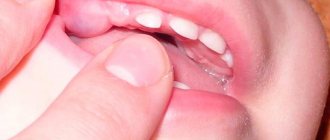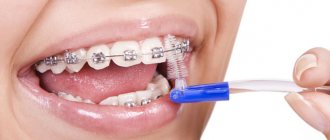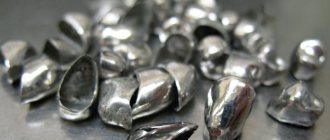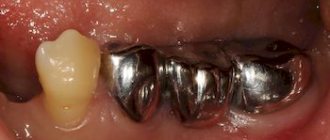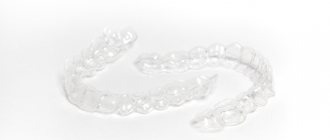If you are reading this article, it means that you are interested in improving your bite and are considering braces.
This shows that you have the determination to achieve a healthy, charming smile.
Here we have collected the questions that people most often write to us in messages.
I hope this changes your life for the better, just like it has changed the lives of thousands of other people.
Can adults get braces to correct their bite?
Anyone can correct a malocclusion, regardless of age. But in an adult, this process takes longer than in children, because skeletal growth has already stopped and hard bones are more difficult to form.
In addition, some oral health conditions may delay the installation of braces. For example, caries, periodontal disease, endocrine diseases.
Sometimes the effect of treatment is influenced by the presence of crowns and bridges. The treatment period starts from 1.5 years.
Comparison of performance of different braces models
To make the right choice - which braces are best to install to straighten teeth - it is recommended to find out the characteristics of various systems and their varieties.
By type of fixation:
| Sign | Vestibular braces | Ligature |
| Efficacy of therapy | High performance | To have an effective effect, you need a suitable clinical situation |
| Duration of treatment, years | Treatment periods take up to 2 years | Treatment takes from 2 to 3 years |
| Design reliability | High structural strength | Structure and appearance depend on external stimuli |
| Popularity | The choice of many specialists and patients | Rarely fixed due to inappropriate cost |
| Aesthetic component | Average aesthetics | Invisible to others |
| Difficulty of fixation | Easy to install | Installation difficulties |
| Hygienic care | Standard hygiene products required | Difficult to maintain hygiene |
| Adaptation period | Getting used to it takes 2 weeks | Adaptation can take up to 3 months; it happens that the patient needs to install another system |
| Wearing comfort | Convenience | Inconvenient |
| Presence of pain | Painless when wearing | Soreness |
By comparing the characteristics of equipment made from different materials, you can understand which braces are better: ceramic or metal.
Metal plates start at a cost of 80 thousand rubles, show high results even with severe deformations, but they are difficult to clean. The main disadvantage is that they attract attention when communicating.
| Characteristic | Classic self-ligating braces | Invisible (lingual) braces |
| Visibility | Visible due to the contrast with the enamel shade | Invisible to others |
| Convenience | May damage soft tissues | Causes diction problems |
The cost of ceramic systems starts from 110 thousand rubles. Such plates are very fragile and require careful hygienic cleaning.
| Characteristic | Classic self-ligating braces | Invisible (lingual) braces |
| Visibility | Invisible in conversation and when smiling | Invisible to others |
| Result in severe cases | Effective in a large number of pathologies | Coping with even the most severe clinical cases |
| Convenience | Discomfort occurs only in the first 7 days | After the adaptation period, you can avoid injury if you follow all the specialist’s recommendations |
Does teeth straightening hurt?
The installation of braces itself is painless, but requires patience because it takes about an hour.
For 7-10 days, teeth may hurt when biting. The body must get used to foreign objects. In general, you live your old life, you just notice pleasant changes in yourself.
Control visits are needed to correct the process and form the correct position of the teeth. Usually after changing the arch the pain goes away within 3-7 days. It all depends on individual sensitivity.
For some, wearing braces is only unpleasant, for others, on the contrary, it is painful, and some do not feel anything.
Conclusion
Installing braces is a complex multi-stage process that requires precision, high qualifications and professionalism from the dentist. Different brace systems have differences in installation. To ensure that the procedure is quick and comfortable, it is important to choose a clinic with a good reputation. Leonid Gorbunov's dentistry employs responsible orthodontists with extensive experience, so the effectiveness of treatment is guaranteed.
Installation video
Posted by:
Do braces make it difficult to eat?
Once installed, you will need to learn how to eat in them. This period takes on average 3-7 days.
At this time, give preference to soft and liquid foods. Cut fruits and vegetables into small pieces. Avoid fibrous and sticky foods.
Over time, you will be able to eat almost everything except Coca-Cola (can dissolve glue), hard foods (nuts, crackers, chocolate) and sticky sweets (chocolate, cookies or caramel bars). You should also not chew gum.
Nutrition while wearing braces
Until you have adjusted to braces, you need soft or liquid foods. Introduce new foods into your diet gradually. During the adjustment period, exclude the following foods.
- Solid products
. First you need to grind them in a blender. Lollipops, crackers and nuts should also be removed from the diet for a while. - Food that is too cold or hot
. During the period of adaptation, the sensitivity of teeth and gums increases and discomfort and pain may appear.
The menu should consist of foods that do not need to be thoroughly chewed:
- fermented milk drinks (kefir, yogurt, fermented baked milk);
- boiled cereals (semolina, buckwheat, wheat, oatmeal);
- meat in the form of pate;
- puree soups;
- jelly and curd mass:
- bananas, watermelons, apricots, plums and persimmons.
After adaptation, the list of foods on the menu will expand, but dentists still recommend excluding the following from the diet.
- Everything sticky
- nougat, chewing gum, toffee, caramel and anything that stretches. These products get stuck in the design parts and become food for bacteria. - Starch
- baked goods, cereals and corn sticks - also, when stuck in braces, causes the growth of harmful microorganisms. - Coloring drinks and food
- black tea, colored soda, coffee, beets, wine. This is especially important if ceramic or sapphire structures are installed - they are easier to paint than others.
How often should inspections be carried out?
Every 1-2 months, it all depends on the defect and the individual structure of the patient’s teeth. During the visit, the orthodontist checks the success of the treatment and sets a vector for the arch, which determines the movement of teeth in the right direction.
Missing follow-up visits may negate the effect of previous treatment. You are also required to visit a hygienist every six months.
Braces, whether external or internal, need to be worn for an average of 1.5 years. But determining more precise timing depends on the initial situation and age of the patient. Sometimes it takes 2 years to eliminate a defect.
The third stage is eliminating current dental problems
Treatment with braces is a long process, during which it is difficult to carry out treatment due to the presence of a fixed structure in the patient’s mouth. Before installation, the dental system is sanitized. It is necessary to cure existing caries, pulpitis, periodontitis and other possible diseases. Sometimes it is necessary to treat even those teeth whose condition is satisfactory at the moment.
In some cases, removal of certain dental units is required. The decision about extraction is made by the orthodontist. This is a last resort method. The doctor tries to preserve and minimally injure the patient’s natural teeth. Sometimes patients have their teeth removed in advance and come for bite correction. Doctors strongly do not recommend doing this, otherwise treatment may be complicated by a rash act.
If sanitation of the oral cavity is performed in advance, it is enough to present a certificate to the orthodontist. Before fixing the bracket system, professional oral hygiene is carried out: tartar, soft and hard deposits are removed, teeth are ground and polished. Subsequent self-care with braces will differ from caring for natural teeth. The orthodontist will tell you in detail what means and how to care for the oral cavity with braces.
What to do if the bracket comes off?
In itself, this happens quite rarely, only in cases of severe crowding of teeth, since the arch puts a lot of pressure on the dentition and the lock falls off. Another option is if the patient is a nut or other solid food lover.
If you find a broken bracket, contact your orthodontist immediately. Otherwise, the teeth will begin to gradually move to their original position. Also remove elastic bands if you wear them.
The doctor sees patients with unstuck braces out of turn. It takes about 5 minutes to glue a new lock.
It also happens that the archwire flies out of the bracket grooves. You can try to get it back yourself. However, this should be done extremely carefully, without damaging the adjacent locks.
Fifth stage - activation process
After fixing the bracket system, activation occurs. The procedure is carried out according to the prescribed treatment plan. It is necessary to visit the doctor regularly at scheduled times. At a scheduled appointment, the orthodontist assesses the condition of the structure, tightens the arch, and replaces clasps and ligatures that have failed.
Initial activation will not straighten the dentition. The teeth move slowly, so the equipment needs to be adjusted each time. The activation process does not take much time. It is important not to violate the recommended deadlines.
Installing braces is a safe and painless procedure. The patient may experience discomfort from sitting in the dentist's chair for long periods of time. To prevent dry lips, use a moisturizer. During the process, pressure may be felt on the teeth, but not pain. In general, the procedure is comfortable and has virtually no resemblance to dental treatment.
How to brush your teeth with braces?
This is where a traditional toothbrush and toothpaste don't serve their purpose. Therefore, you will need to buy a special orthodontic brush, brushes and floss from the pharmacy. You can also use an oral irrigator if you wish.
This way you can effectively clean your teeth and the area around the locks. Teeth should be thoroughly brushed after each meal, because food debris is deposited on braces, which contributes to the development of caries and does not look aesthetically pleasing. We have repeatedly encountered patients whose teeth are more well-groomed than those of a person without braces.
When is it necessary to install braces?
A bracket system is an orthodontic device consisting of a bracket plate with a recess for an arch. The main tasks of the orthodontist are to make the physiological closure of the jaws, return the units to anatomical positions, and give the smile a natural and beautiful appearance.
Standard system includes:
- Bracket. A plate fixed to the coronal part of the unit with specialized material.
- Wings or castle. A recess is formed for the passage of the orthodontic arch.
- Arc. A horseshoe-shaped wire made of an alloy of various metals, along which the teeth are directed.
- Ligatures. Rubber bands or wire connecting the braces and the arch.
The purpose of this treatment is to straighten teeth and correct jaw abnormalities. An improvement in the bite can be noted after 6-8 months.
Indications for therapy with braces:
- malocclusion;
- violation of the symmetry of facial features;
- large gaps between units;
- lack of space in the dentition;
- injuries of the maxillofacial area or TMJ disease (pain, crunching when chewing or closing the jaws);
Restrictions on the use of equipment:
- many non-removable orthopedic structures;
- in women, pregnancy and breastfeeding;
- blood diseases;
- lung pathologies;
- immunodeficiency states;
- inflammatory diseases of the extremities (rickets, arthrosis, arthritis);
- cancer.
Which braces are best for different age categories? Teenagers and adults are fixed with equipment of different models. It is important to choose systems with the attending physician, taking into account age, the anomaly itself, etc.
Are braces the last stage of orthodontic treatment?
After removing braces, you need to consolidate the effect of straightening your teeth. For this purpose, retainers are made that will protect teeth from returning to their original place.
There are two types of retainers:
- Removable – transparent, plastic mouth guards. Used only at night or during a certain period.
- Non-removable - made of metal. They are installed on the back surface of the teeth using special composite materials.
The decision on the best method is made by the orthodontist. The aligners must be worn at all times during the first month, removed only for eating and brushing your teeth. On average they are worn for 2 years.
While wearing retention devices, you must visit a doctor every 3-6 months.
Prices for braces
Consultation with an orthodontist
- X-ray panoramic image
- Oral examination
- Drawing up a treatment plan with costs
Price : 2,000 ₽
*if treatment continues in the clinic according to the plan, the consultation is not paid
| Self-ligating metal braces Damon Q | from 250,000 ₽ |
| Self-ligating ceramic braces Damon Clear | from 250,000 ₽ |
| Aligners - trays for straightening teeth | from 350,000 ₽ |
Prices for system components vary and depend on a number of factors:
- plate material;
- fixation method;
- dental surfaces for attachment;
- dental clinic level;
- the tools used;
- having its own dental laboratory.
By comparing the characteristics , you can determine which braces are best for a particular clinical situation, and which ones are suitable for the patient. The most affordable models are metal ligature models; without ligatures they will be more expensive. The highest cost is for aesthetic systems made of ceramics, sapphire and internal (the most expensive).
The total cost is the fastening mechanism, installation and removal, corrective visits to a specialist, and fastening of retainers. At Implantmaster, the cost of installing the Damon Clear and Q systems, subsequent appointments and corrections will cost around 250 thousand rubles. When choosing orthodontic therapy with the help of aligners (transparent aligners for moving teeth), the price will start from 350 thousand rubles. Diagnostic x-rays, model calculations for the formation of a full course of correction, with further therapy with us, will amount to 2000 rubles, the consultation will be free.
Can you continue to live with crooked teeth?
Crooked teeth are more vulnerable to tooth decay and periodontal disease. If teeth grow incorrectly, their surfaces become excessively worn down when eating, which worsens the malocclusion. Therefore, sometimes it leads to serious diseases of the temporomandibular joints.
In addition, if you suffer from frequent headaches, chondrosis, or have tinnitus, it is better to check your bite.
Who should not get braces?
Installation of braces has contraindications:
- Absolute – it is not possible to eliminate them: complete absence of teeth (edentia) or the absence of a large number of them;
- changes in the bone tissue of the jaw, leading to its fragility - osteoporosis and osteochondropathy;
- severe diseases of the blood, cardiovascular, endocrine (diabetes mellitus) systems;
- oncological diseases;
- tuberculosis, AIDS;
- mental illness.
- infectious-inflammatory and degenerative-dystrophic diseases of periodontal tissues (periodontitis, periodontal disease);
After treatment of these diseases, braces can be installed.
Braces hurt the oral cavity, what should I do?
After installing braces, each patient receives wax for locks from the orthodontist. At the very beginning, it is worth applying it to the entire system, because the mucous membrane in the oral cavity is not yet accustomed to contact with foreign objects.
Abrasions and wounds heal very quickly. Their healing can be accelerated by using agents that promote the healing of wounds in the oral cavity.
Types of bracket systems
Before installing braces, it is important to understand which plates, taking into account their properties, are best to choose. Designs are distinguished according to certain criteria:
Material:
- metal;
- ceramics;
- sapphire;
- plastic;
- combination of materials.
Arc fixation method:
- ligatures;
- non-ligated.
Fixation:
- straight;
- indirect.
Tooth surface for installation:
- vestibular (visible when smiling);
- lingual (from the side of the tongue).
How long to wear elastic bands
Rubber bands are elastic bands. This is a small but very important detail. They are used at any stage of treatment. The principle of their influence is similar to an arc. They help guide the movement of the dentition or individual units. They are usually placed in the first six months of treatment. But it is not always the case. Elastics are used in the presence of impacted teeth. Rubber bands help the tooth quickly take its place in the row. In a distal bite, rubber bands pull the jaws closer to each other. The orthodontist decides whether to install traction bars or not. This is as important a tool as braces.
Minimum and maximum wearing periods
The time required to correct defects of varying severity also differs. Simple anomalies include diastema, trema, and crowding of teeth, which is caused by impaired development of the jaw. In such cases and if there is a gap due to missing teeth, the treatment period is 12 months. Two years or more - this is how long it takes to correct a distal bite, cross-row arrangement, open bite, or complex crowding.
There are cases when orthodontic treatment lasts more than 3 years. As a rule, such patients also require surgical treatment. Sometimes teeth need to be removed before braces can be installed. Indications for removal: abnormal jaw development, presence of supernumerary teeth. Extraction will free up space for movement. With the development of inflammatory processes in the mouth, allergies to components of the system and improper hygiene, the system may be removed ahead of schedule. After treatment and elimination of contraindications, braces are placed again.
Why is it important to choose the right orthodontist?
Orthodontic treatment is long-term, it will last from a year or more, so the patient cannot immediately determine whether it is being treated well or not. If something in the treatment goes wrong due to the doctor’s fault, you will find out about it months, or maybe years, later. In order not to waste time, money, nerves and health, it is important to immediately choose a good orthodontist with whom you will also enjoy communicating for a long time. If you want to know our recommendations on how to do this so as not to regret it, read the article: “How and why to choose an orthodontist?”
Second month of treatment: correction of gross anomalies
The first changes become noticeable in the photo by the end of the second month. The orthodontic arch, after installation, repeated the shape of the abnormal bite, over time began to return to the originally specified state, corresponding to the correct bite. At the same time, under the force of her traction, the teeth also began to move in the right direction.
The first positive results are so impressive that some patients are ready to remove their braces at this stage. Of course, this is impossible. Orthodontic treatment initiates the natural biomechanical process of bone removal and growth, interrupting which will force the teeth to return to their original position.
Which braces are more profitable to install?
Self-ligating and ligature braces correct the bite and correct complex dental anomalies. Non-ligating systems are more expensive, but the installation of self-ligating structures reduces the number of visits to the clinic. At a lower price for edgewise braces, the patient visits the orthodontist an average of 24 times during treatment, 2.5 – 3 years. When installing self-ligating systems, approximately 12 visits to the doctor are required. The course lasts from 1 to 2.5 years.
Clinic management is often not ready to purchase expensive systems and pay for additional training for orthodontists. Doctor A.V. Tikhonov economically substantiated the advantages of installing ligature-free braces. The orthodontist compared the rate of arch replacement during activation of self-ligating structures and traditional models with ligatures. On average, removing and installing the arch takes 8 minutes. 14 sec. on classic systems and 1 min. 21 sec. – on self-ligating ones. Usually the arches are changed on the upper and lower jaws - the duration of the manipulation is doubled.
treatment on Damon Q2
According to the researcher, taking into account the reduction in treatment time and the number of visits to the doctor, ligature-free braces are more economical for the clinic and the patient. The ergonomics of working with the ecosystem of Damon braces and additional elements reduces the appointment time and the total financial costs of the person visiting the clinic.
Caring for braces after installation
After installing braces, the patient's body must get used to them. At first, they can rub the inner surface of the lips or tongue, causing pain, problems with taste and diction. But if you follow all the doctor’s recommendations, within 1 – 2 weeks after installing braces, your teeth will not hurt, all discomfort and speech disorders will disappear. The patient will simply stop perceiving braces as something foreign. If braces irritate the inner surface of the cheeks or lips, erosions and ulcers form on the mucous membrane, then, as prescribed by the doctor, the clasps are covered with special wax or silicone. A piece of wax is lightly kneaded in your hands and pressed into the lock, after cleaning and drying your teeth and braces.
Diet restrictions
For the first few weeks after installation of braces, it is recommended to eat only liquid and mushy foods. Gradually, dishes can be diversified. But it is better to grind solid foods first in a blender. It is also better not to consume very cold or very hot food and drinks. The following products will need to be completely eliminated while wearing braces:
- anything that sticks to the teeth - chewing candies (taffy, soft caramel), Turkish delight, nougat, chewing gum;
- everything that stains teeth - beets, red wine, strong black tea, coffee, Coca-Cola.
Limit: sweets and baked goods, as they are an excellent breeding ground for microorganisms present in the mouth.
How to brush teeth with braces
When starting to brush teeth with braces with a regular brush, the patient notices that it is impossible to do this efficiently. Therefore the following are produced:
- special toothbrushes with V-shaped bristles:
- cone-shaped (mono-beam) toothbrushes:
- interdental brushes:
- dental floss (floss); They come in different types depending on how closely the teeth are arranged in the dentition.
Such devices perfectly clean both teeth and braces. You should consult your dentist about which toothpaste is best to use. He will recommend the most suitable toothpaste for the patient.
You can also use irrigators to clean hard-to-reach places with a water jet. These devices do not injure the gums at all:
But even this will not be enough. If you have had braces installed, you should visit a dental hygienist at least twice a year for professional teeth cleaning.
Orthodontist visit schedule
The frequency of consultations depends on the type of braces installed. Classic ligature braces require a visit to the orthodontist to correct the tension of the arch once every 1.5 - 2 months. If ligature-free active braces are installed, the doctor may schedule less frequent visits. The easiest way to treat is with passive non-ligated Damon System braces. These are self-regulating systems, so recovery of disorders occurs faster and does not require frequent visits to the orthodontist.
If braces cause severe, increasing discomfort, you should immediately contact an orthodontist.
History of the creation of braces
Doctors of the ancient world of the 9th - 6th centuries BC straightened teeth using improvised devices. In 1728, surgeon Pierre Fauchard published a study, one chapter of which was devoted to orthodontics. In the 9th century, the American Edward Engle created the first prototype of the braces system. The scientist invented four devices:
- E-arc gold alloy;
- modification of the E-arch with pins and tubes;
- ribbon arc;
- edgewise braces.
The operating principle of the structures underlies the operation of 21st century braces.
The E-arch, which expands the dentition, was made of a gold alloy and fixed into rings installed on the molars. Each tooth was tied to an arch with wire. Subsequently, Engle refined the design: adjustable tubes appeared on each tooth and pins on the arch. The pins fixed the arch into the slots, the doctor adjusted the pins, and the teeth moved. The system was not actively used in clinical practice, and the E-arm remained an intermediate option.
Later, an American scientist created a ribbon arch. Engle replaced the tube design on each tooth with a vertical rectangular groove. The crowns of the teeth tilted under the influence of the arc, but the roots remained in place. The limitation in the width of the groove and the low elasticity of the arc did not allow the torque to be controlled.
In 1928, Edward Engle designed the edgewise braces system. The scientist compared the geometry of the groove and the arc and replaced the ribbon arc with a rectangular wire. Engle established the slot size of 0.022 x 0.028 inches, which is what 21st century orthodontists use.
Edgewise braces were not wide enough to rotate the tooth under the force of the archwire. To achieve the result, orthodontists installed two braces on the tooth at once. The design formed the basis of ligature systems. With the development of orthodontics at the beginning of the 20th century, the gold alloy from which the arch was made was replaced by stainless steel. The increased rigidity of the steel compensated for the reduced arc thickness. A groove size of 0.018 x 0.025 inches has appeared, which, along with 0.022 x 0.28, is used in practice by orthodontists.
Damon Clear with arc
#4 Braces are expensive
Let's not deny this fact. Especially if you plan to install expensive options, such as self-regulating sapphire systems. If beauty does not play a big role, then you can opt for metal braces. They perform the same function and are no different in efficiency.
The period of wearing braces is quite long and you can pay in installments. Monthly payments will be small and will not affect the family budget.
The most difficult period is the first 2–3 weeks
Correction of orthodontic defects is based on the use of natural processes occurring in the body. The first evidence of the beginning of correction is the so-called dissociation of the bite, when the dental ligaments and bone tissue are forced, under the influence of the orthodontic arch, to begin to work in a new way.
This process can become very unpleasant for an unprepared patient: during the first few days, the closing of the jaws completely disappears, muscles begin to ache, and constant aching pain in the teeth appears and increases. If you are not used to it, braces can rub your cheek, tongue or gums, and in some cases, gum inflammation can even occur.
In fact, such a shock state of the dental system serves as excellent confirmation that the process has begun. But there can be no talk of a visual effect in the first few weeks of treatment.
How long does it take to install?
The structures are installed only on healthy teeth. Therefore, before starting orthodontic treatment, you need to undergo dental treatment. This will help reduce the risk of developing gum and dental disease while wearing it. Caries that appeared during treatment may cause dismantling of the structure. This means that treatment will have to start again. The duration of the procedure depends on the degree of the anomaly, the doctor’s experience, and the characteristics of the dental system. The time does not depend on whether braces are placed on adults or children. Non-ligature structures are easier to install. Therefore they are installed faster.
Installation steps:
- therapeutic treatment;
- professional cleaning;
- The orthodontist processes and dries the enamel;
- Glue is applied separately to each tooth and a lock is fixed to it;
- fixing the arch with clasps or ligatures;
- design correction.
Once the system is installed, it starts working immediately. That is, the teeth begin to gradually shift. The first result can be seen after 3-4 weeks. After the initial displacement, the arc pressure weakens. Therefore, you need to regularly visit the orthodontist for regular arch correction. The doctor monitors the creation of constant pressure. This is the key to effective correction of the bite and dentition. You can ask the orthodontists at our clinic at your appointment for how long braces are worn. You can sign up through the website or by phone.


